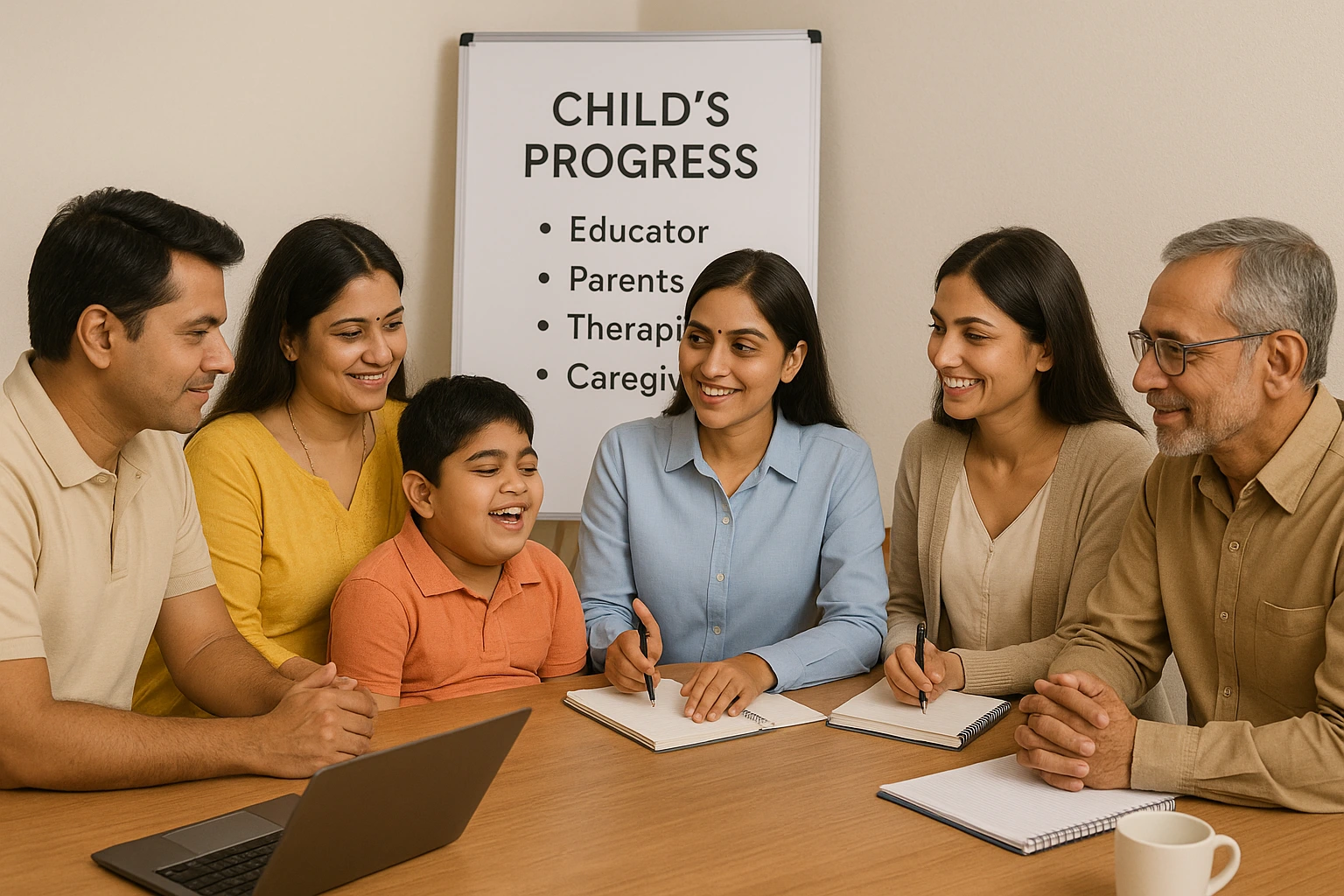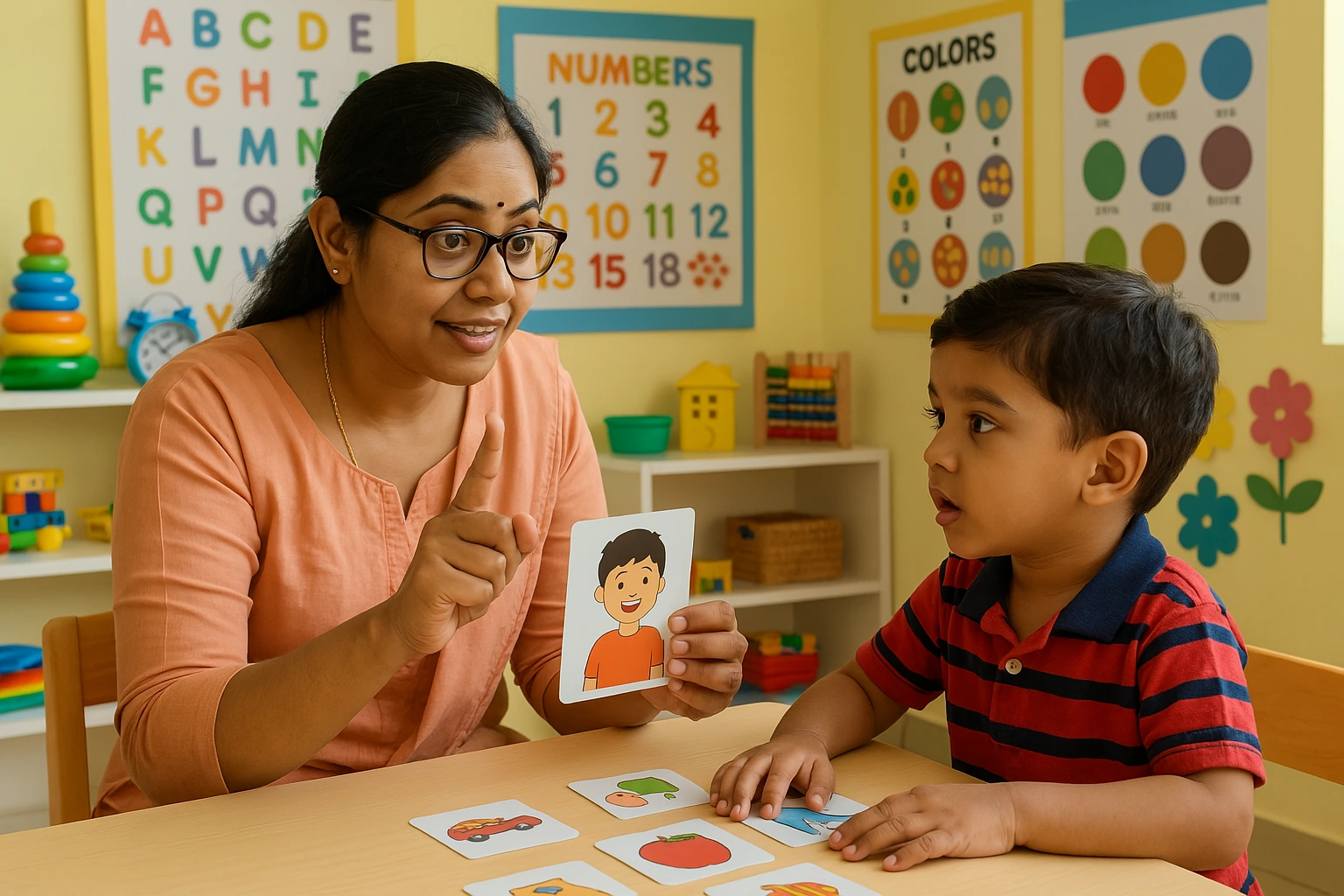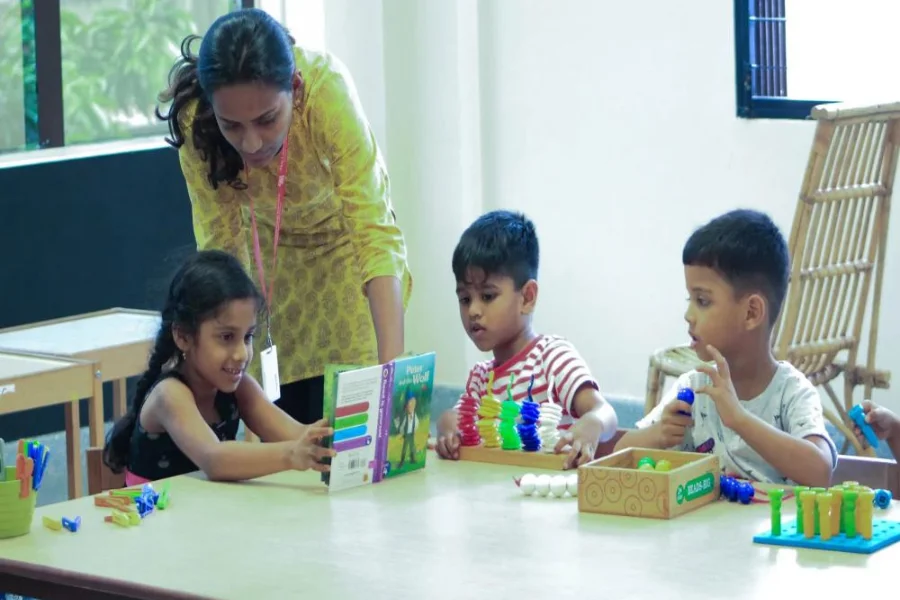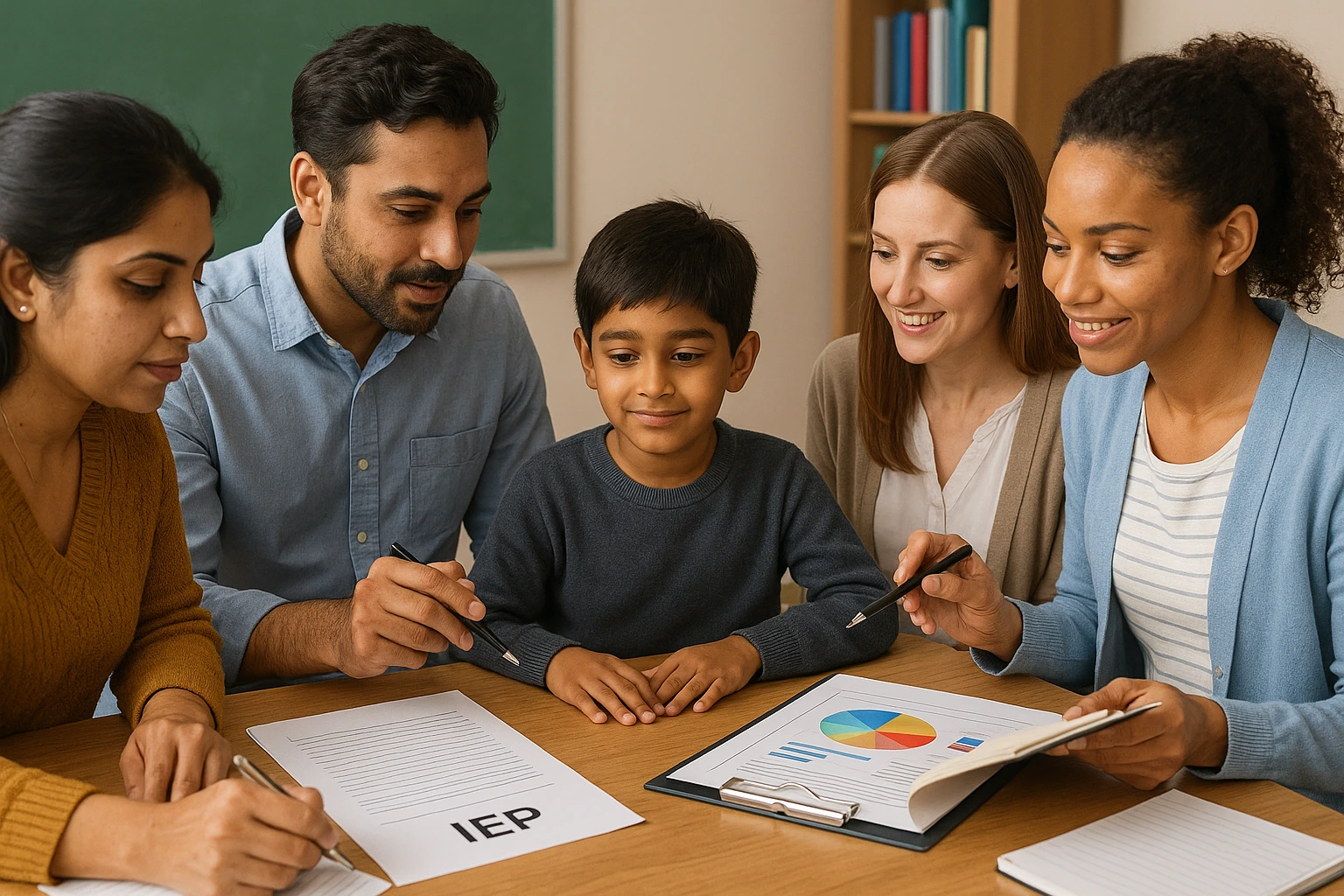What is an Individualized Education Program?
What is an Individualized Education Program?
An Individualized Education Program (IEP) is an official document that contains a detailed portfolio of the child, outlining their struggles, key strengths, and the teaching methodologies that will be used to support the student in school.
Based on the child’s capabilities, it outlines his goals for the year and the strategies that will be applied to help the child attain them, enabling them to accommodate effortlessly in a mainstream classroom.
The IEP is formulated under the supervision of parents, teachers, educators, and caregivers who provide their input about the child, and the best practices that work in the child’s best interest are used.
The IEP aims to have a concrete plan for the holistic progress for the child and ensure that each child gets a fair chance to receive quality education amongst their peers in a manner that aligns with their learning preferences. It helps to maintain a healthy and positive collaboration amongst parents, educators, and therapists to ensure that if the outcomes attained are not satisfactory, the desired modifications are made.
Table of Content
How IEPs Help Students Succeed.
An Individualized Education Program is based on the principle that the child’s mode of learning must be the foundation on which the teaching methods are to be based. As IEP gives full importance to the child’s preferred learning style, it becomes easy for the teacher to be well-versed with the appropriate teaching methods that must be implemented for better learning. IEP lays down a blueprint for the child’s meaningful progress in school, which has all the stakeholders of the child’s journey on the same page.
Here’s how an Individualized Education Program helps students succeed:
Clear Learning Goals
The Individualized Education Program is centered around the child’s capabilities, which implies that the goals set for the child to achieve are practical and easily achievable for the child at his own pace.
Tailored Support Services
Teachers use special teaching methods that fit how the student learns best. The teaching methods in an Individualized Education Program might use pictures, step-by-step lessons, or activities that use many senses. These aim to help the child understand and remember better.
Inclusive Participation
The plan adds extra help like speech therapy, physical training, or talking with a counselor when needed. These services play a key role in assisting the child in getting past specific hurdles that affect their learning and taking part in class activities.
Collaborative Planning
The child’s IEP is a complete collaborative masterpiece where the educators, therapist, class teacher, and parents work together to design a precise IEP considering all aspects of the child’s growth, such as his schoolwork, his relationships, and his physical development.
Regular Review and Updates
Parents are key in shaping and updating the Individualized Education Program. There are regular meetings between the parents and educators to be properly updated about the child’s periodic progress.
The program might also change classroom tests and learning tools. For instance, it could give more time for tests or make instructions easier to understand.
Click Here to download the brochure of LD Course!
Call or WhatsApp on +919869546913 / +919869866277 for more details of LD Course!

One Personalized Plan at a Time to Build a Brighter Future
Each Individualized Education Program (IEP) is a unique agenda designed by tailoring the methods, techniques to suit the child’s needs, making the entire learning journey joyous and stress-free.
Here’s how one personalized plan at a time contributes to long-term success:
Emphasis only on the child’s strengths
The IEP is excessively based on the child’s strengths and needs after detailed study of the child. This helps in better attainment of goals and objectives as the child finds it easy to learn in a manner that is based on his style of learning.
Objective-based Learning
The IEP is objective-oriented oriented which implies that the learning goals set for the child are realistic and can be easily achieved by the child at a pace that is convenient for him. The goals are reviewed periodically and reviewed to check if the child’s progress in on track.
Collaborative Decision Making
The team of parents, educators, specialists, and special educators collaborates and builds the IEP, which reflects the highest interests of the child.
Fosters growth in the long run
AN IEP is not just for a year or a short term. It has envisioned the child’s academic journey for a longer duration and ensures that the child’s foundation for his lifelong success is properly laid.
With a child-oriented IEP, the team of teachers, special educators and parents the child’s bright educational journey sets sail on the right track with necessary guidance and assistance being provided consistently for the child.
Click Here to download the brochure of LD Course!
Call or WhatsApp on +919869546913 / +919869866277 for more details of LD Course!

What Goes into an IEP?
An Individualized Education Program is a customized proposal that is exclusively child-oriented, formulated to cater to the diverse learning needs of the child with disabilities. It is a full-proof documented agenda that ensures the child gets the desired academic aid and the essential emotional guidance that helps them accommodate happily into the mainstream classroom without having any stress of being judged or laughed upon at.
The IEP is designed under the expertise of leading professionals, special educators, teachers, and parents who collaborate to devise the best plan with target-oriented objectives, helping the child lead meaningful lives with minimal assistance.
Here’s what goes into an Individualized Education Program, explained in detail:
Present Level of Academic Achievement and Functional Performance (PLAAFP)
This module reflects on how the child is presently doing in his school. It’s an actual report that is based on his current performances. It comprises educational progress of basic language literacy and math skills, and his interpersonal skills. The PLAAFP explains how the student’s disability affects learning and daily classroom activities.
Annual Goals
These are detailed and quantifiable goals that are time-based, e.g., his yearly objectives. Goals are set based on the child’s level of expertise, his key strengths, and his needs. Goals are not just academics-based; the other areas of importance, of social behaviour, physical development, are also a part of it.
Special Education Services
This part lists the instructions and interventions the student will receive. Services might include support from a special educator, modified assignments, or direct teaching in specific skill areas. These services are designed to meet the individual goals set in the Individualized Education Program.
Related Services
Additional services that help the student benefit from special education are also included. Examples are speech therapy, counselling, physical therapy, or transportation. These services address other needs that impact learning and participation in school.
Accommodations and Modifications
When a certain teaching technique is not yielding the desired outcome, modifications are made to adapt to the child’s needs. Accommodations are the benefits that are conferred upon the child to help him access learning. The IEP will have a detailed list of the various accommodations and modifications that will be implemented for the child’s benefit.
Peer Interaction and Participation
This helps to enlist the activities in which the child is expected to be engaged along with the other students. IEP ensures that the child’s participation is a must and should be maximum in all classroom programs.
Progress Monitoring
The IEP has special provisions made for how the child’s assessments will be done, and the benchmarks for judging the child are not age-old traditional methods. The child is given ample options, freedom, and modes through which they can explain what they have learnt.
Each of these components plays a critical role in shaping a meaningful and effective Individualized Education Program, ensuring the student receives a supportive and personalized education experience.
Click Here to download the brochure of LD Course!
Call or WhatsApp on +919869546913 / +919869866277 for more details of LD Course!

Source: ayushmantuitions
The IEP as an Educational Lifeline
An Individualized Education Program (IEP) is a support system designed for students with special educational needs. It ensures that each child has the tools, attention, and environment needed for effective learning.
Here are the key aspects that make the Individualized Education Program an essential resource, explained in detail:
Personalized Learning Goals
The IEP develops goals that are specific, measurable, and achievable for the child’s current skills are currently. Goals are individualized and based on the student’s strengths or pace of learning, not generic academic objectives. Progress evaluations are scheduled, and goals are adjusted as needed.
Tailored Instructional Strategies
We teach in a manner that suits the student. Whether expressing a concept visually, breaking it down in simple terms, or providing a kinaesthetic experience, how the content of an IEP should be delivered to the child focuses on improving comprehension and memory.
Specialized Support Services
The plan provides specialized services like speech-language therapy, occupational therapy, and counseling as and when required. This support will enable you to identify the development of demand for meeting some of the identified needs of the child in their learning and participation in school.
Involvement of a Multi-disciplinary Team
Contribution. Since an IEP is created, and then reviewed by a team of educators and therapists (including input from the child’s parents), all aspects of the student’s development are taken into account (intellectual, social, emotional, and physical).
Parental Participation and Communication
Parents would play a significant role in the development and revision of the Individualized Education Program. They will have opportunities to express their thoughts and concerns, and they will receive updates on a regular basis and their child’s progress.
Adapted Assessments and Learning Materials
The IEP will probably include adaptations of classroom evaluations and learning materials, like: extra time on tests, simpler test directions, or using a computer or other assistive technology. In each of those examples, the Individualized Education Program should guide these adaptations to fairly evaluate.
Focus on Inclusion
A vital goal of any IEP is to ensure that the child participates and engages willingly in all the important classroom activities without any fear. As the IEP has strategies revolving around the child’s preferences, it becomes relatively comfortable for the child to express himself freely and participate in all programs.
By setting clear goals, providing continuing support, and closely monitoring the progress, an Individualized Education Program sets the path for students to progress both in their studies and as individuals.
Knowing what an Individualized Education Program means shows how important it is for teachers to be good at helping all kinds of students’ learning styles. If you want to become a teacher who can make and use these programs, think about signing up for the Learning Disability at Vidhyanidhi Education Society (Govt. Regd.). This course gives future teachers the right skills and know-how to create classrooms where everyone can learn. Start your journey to help kids with special needs.
Shape young futures—join Vidhyanidhi’s LD Course today!
Click Here to download the brochure of LD Course!
Call or WhatsApp on +919869546913 / +919869866277 for more details of LD Course!
FAQs
Who Creates an IEP?
A group that includes educators, family members, school experts, and at times the student themselves, joins forces to develop the Personalized Learning Plan
Do IEPs Work?
Yes, when put into action, Personalized Learning Plans help students achieve their targets, improve their abilities, and do well in school with the backing they require.





